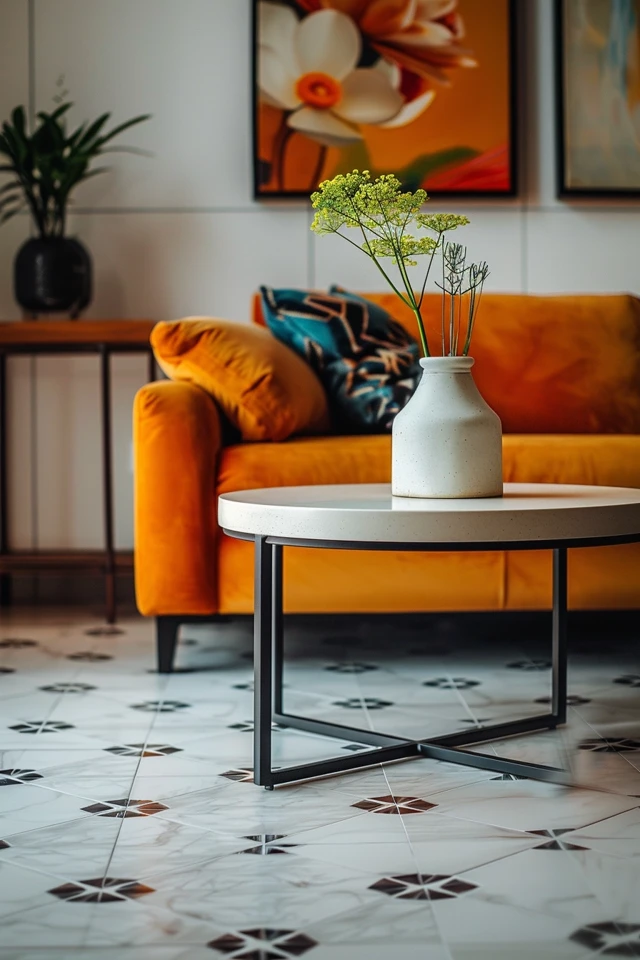When it comes to tile installation, the choice of pattern can make a big difference in the overall look and feel of your space. One popular pattern that can add style and sophistication is the offset tile pattern. This design technique involves setting the tiles in a way that creates an offset, or staggered, look.
Before diving into the tile installation process, it’s important to plan your layout and consider a few design tricks. Dry-fitting the tiles allows you to visualize the pattern, determine the number of cuts needed, and ensure a desired outcome. Take into account the width of grout lines and any obstacles in the room.
The most common offset pattern is the grid pattern, where tiles are set square with a corner to minimize cuts. However, there are several other options to consider. Stripes, color blocking, and accent stripes can add interest and create a unique visual impact. The diagonal or on-point pattern is great for making a room appear larger and hiding imperfections, while the pinwheel or hopscotch pattern allows for creative combinations of different tile shapes and sizes.
Offset patterns, such as the running bond or brick pattern, can create a traditional or natural look, depending on the offset ratio. Additionally, unconventional shapes, patterned tiles, and modular tile lines offer endless possibilities for unique designs.

To achieve professional results, proper planning and tile setting techniques are crucial. Whether you’re a DIY enthusiast or seeking professional tiling advice, incorporating offset tile patterns into your design can elevate your space and give it a polished, sophisticated look.
Key Takeaways:
- Offset tile patterns can add style and sophistication to your space.
- Prioritize dry-fitting the tiles to plan your desired pattern and minimize cuts.
- Consider different offset patterns like grid, diagonal, and pinwheel for unique looks.
- Unconventional shapes, patterned tiles, and modular lines offer design versatility.
- Proper planning and tile setting techniques are essential for professional results.
Tips for Achieving the Perfect Tile Layout
When it comes to tile installation, achieving the perfect layout is essential for a polished and professional finish. Follow these tips and techniques to ensure a successful tile project:
- Plan your layout: Before starting your project, take the time to plan your tile layout. Consider the size and shape of your tiles, as well as the desired layout pattern. Dry-fit the tiles on the floor or wall to visualize the pattern and make any necessary adjustments.
- Use the right tools: To achieve precise and clean tile cuts, invest in a tile cutter or wet saw. These tools will make cutting the tiles much easier and ensure accurate measurements.
- Measure and mark: Take accurate measurements and mark the tiles before cutting. This will help you maintain consistency and avoid mistakes.
- Use tile spacers: When setting the tiles, make sure to use tile spacers to ensure consistent spacing between each tile. This will help create a professional and uniform look.
- Pay attention to grout lines: Keep a close eye on the grout lines as you set the tiles. Make any adjustments necessary to maintain a consistent and even appearance.
- Check alignment: Use a level to ensure that the tiles are properly aligned. Adjust as necessary to achieve a straight and even installation.
- Consider offset for larger tiles: When working with larger tiles, consider using a 30/70 offset to prevent lippage, which is when the edges of the tiles are not level with each other.
Clean off excess mortar and grout: After setting the tiles, make sure to clean off any excess mortar or grout. This will help maintain the cleanliness and overall appearance of the installation.
By following these tile layout tips and techniques, you can achieve the perfect tile installation that will enhance the beauty and functionality of your space.

Advantages of Offset Tile Patterns in Design
When it comes to design, offset tile patterns offer numerous advantages. Not only do they elevate the overall design of a space, but they also add visual interest and sophistication. The use of an offset pattern can create the illusion of a larger space, especially when opting for diagonal or on-point layouts. This clever technique tricks the eye and adds depth to the room, giving it a more spacious feel.
One of the key benefits of offset patterns is their versatility. They allow you to explore a wide range of design options and experiment with different tile shapes and sizes. Whether you prefer a traditional or contemporary look, you can achieve it with offset patterns. The running bond or brick pattern, for example, brings a classic touch to any space.
Another advantage of offset tile patterns is their ability to create a polished and professional look. With careful planning and proper tile setting techniques, you can achieve seamless transitions and clean lines. This meticulous approach ensures that your tile installation not only looks impressive but also stands the test of time.
Whether you’re tackling a DIY tile installation or seeking professional tiling advice, incorporating offset tile patterns can add style and personality to your space. From the illusion of space to the versatility they offer, offset patterns prove to be a smart choice for any design project.


